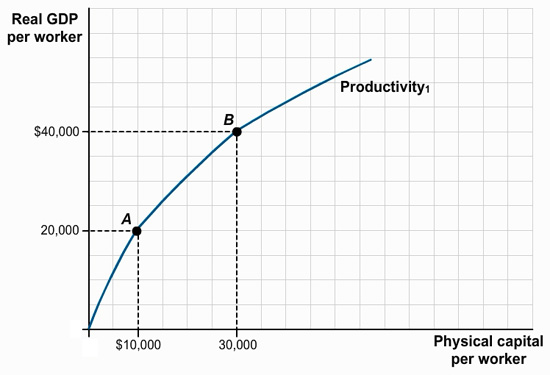Question 1 of 3
Step 1
You are hired as an economic consultant to the countries of Albernia and Brittania. Each country’s current relationship between physical capital per worker and output per worker is given by the curve labeled “Productivity1” in the accompanying diagram. Albernia is at point A and Brittania is at point B.

In the relationship depicted by the curve Productivity1, which of the following statements are true regarding the relationship between physical capital per worker and real GDP per capital for both countries?
Step 2
Assuming that the amount of human capital per worker and the technology are held fixed in each country, can you recommend a policy to generate a doubling of real GDP per capita in Albernia from $20,000 to $40,000?

Step 3
Assume that an increase in human capital doubles the output per worker when physical capital per worker equals $10,000. Using the graph below identify the point on the either Productivity1 or Productivity2 for Albernia.
